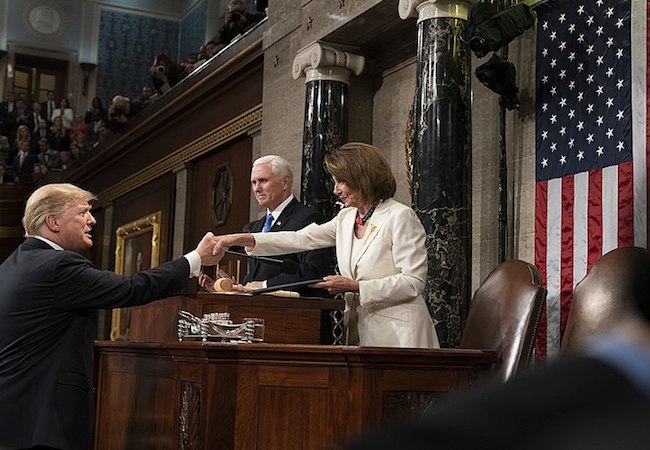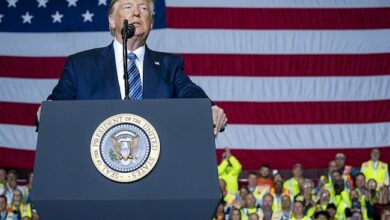A crisis of hearts and minds in the Democratic Party

By Nikhil Vaish
Pete Buttigieg is running for President in 2020 against Donald Trump. Who? Exactly.
That, in a nutshell, defines the core problem the Democratic Party will face in 2020. Almost every mayor, senator, governor, congresswoman and man believes he can take on President Trump and that she alone is the best candidate to defeat the incumbent. I remember remarking about the demise of the Republican Party when 18 candidates ran in the 2016 primaries. That was a clear indication of a group with too many Indians and no Chiefs. At last count, we had 55 potential Democratic presidential candidates. I am just grateful that Michael Avenatti, the self-proclaimed Trump on the left and Stormy Daniels lawyer, dropped out of the race after facing multiple accusations of sexual assault.
Put it this way: if we thought the battle between Bernie Sanders and Hillary Clinton was ugly and exposed deep rifts within the base, then I suspect the 2016 primary will feel like a Disney movie compared to what we will witness in the 2020 primaries.
Democratic candidates are already stumbling over each other to showcase their lack of judgement and discredit the front runner, Joe Biden; whether it is Elizabeth Warren’s attempt to prove her Native American heritage with a DNA test or Corey Booker’s Spartacus moment during the Brett Kavanaugh hearings. Curiously, a few days after some of the progressive favourites announced their bid for the Presidency, media stories started showing up about Biden taking $200,000 for stumping for a Republican candidate and about his role in the much-maligned Clinton-era crime policies which resulted in a disproportionate number of people of colour being incarcerated for minor drug-related offences.
At the other end of the spectrum we have Kirsten Gillibrand, who announced her Presidential bid on a late night comedy show and Kamala Harris, both desperately trying to grow their likeability with younger voters. Ms. Harris released well-designed campaign merchandise with a catchy tagline, and is also taking on the new age social media darlings like Beto O’Rourke (who is expected to run) with a video of her dancing to a Cardi B song. No word yet on whether Ms. Harris will release a viral video on serious policy positions.
The problem is that when you have so many candidates with such minor policy differences, it is impossible for voters to differentiate, leading candidates need to find extreme ways to stand out against the crowd. Outrageousness is exactly what helped Trump come out on top and ensured that the entire GOP narrative during the campaign and primary debates was focused more on size of manhood and ‘pussy’grabbing, versus substantive policy discussions.
I have written previously about how Republican’s moral blindness and abandonment of core Conservative principles during the Bush, Jr. years resulted in an internal civil war. No question that the cracks had been building for many years before, but the Bush years were the final straw, and it led to the rise of the rebel and anti-establishment Tea Party.
The freedom caucus, as they are now called, was responsible for pushing out moderate Republicans like Speaker John Boehner and House Majority leader Eric Cantor (who was defeated in a primary), and is entirely responsible for the GOP dysfunction we witnessed during the Obama years. Their antics of ‘no compromise’ without any goal or unifying vision left their party defenseless and wide open for a hostile takeover by Donald Trump. Now, the Democrats, rather than learn the lessons from the demise of the GOP, seem poised to repeat history, within their own ranks.
Much like the Republican Party, the rift we see inside the Democratic Party has been growing for a number of years and is not sudden. While Bernie did not cause this rift, his anti-establishment campaign did ignite and light the match with young Millennials who were feeling disillusioned with Obama. By going after Hillary Clinton, Bernie also took on the ageing Democratic ‘establishment’ and old guard who many felt had unfairly chosen Obama’s successor without consulting the younger, more progressive and diverse Democratic base.
The fact is that the Democratic party was already broken and hopelessly divided when Obama won his first nomination; in fact he too had defied and defeated the establishment by running against Hillary Clinton, and his primary victory simply hobbled an already weak party.
To win his primary battle against Hillary, Obama knew he needed to go around the party machinery. This is why he created Organising for Action; “OFA was created as a shadow party because Obama operatives had no faith in state parties,” according to Nebraska Democratic Party Chair Jane Kleeb. As a result, during the Obama years there was a massive erosion of power in state legislatures, congressional districts and governor’s mansions.
At the start of Obama’s first term, Democrats controlled 59 percent of state legislatures, by the end it was down to 31 percent; the lowest percentage for the party since the turn of the 20th century. Democrats held 29 governor’s offices at the beginning of his term and by the end they had only 16; the party’s lowest number since 1920. There is no question that, while Obama himself was popular, his persona transcended the party and did not trickle down the ballot. His was a coalition built less on party unity and more on personal charisma, optimism and the idea of tearing down racial barriers. Large numbers of people who came out to vote for him were voting for the first time, and many were minorities who had not voted in a long time.
In 2016, Hillary failed to bring together the same voting coalition that helped Obama win office. Millennials, deeply disappointed with Obama for not being progressive enough, broke for Bernie and many older blue collar voters who voted twice for Obama, and had not cast a vote for a Republican presidential nominee before, broke for Trump because they felt completely ignored and betrayed by Democrats. Of course, we cannot negate Hillary’s own long-standing establishment baggage and deeply polarizing personality. We also have to credit Trump for reading the depth of frustration among working class white voters, a group who had long been the core of the Democratic base. There is no doubt Trump’s message was deeply divisive, but that fact remains that he was the only candidate speaking directly to them.
After the 2016 election, I hoped the Democratic Party leadership would take time to introspect, listen with humility and then forge a new platform for the American people for 2020, onebuilt on ideas, and not ideology rooted in identity politics. Yet, two years on, the dysfunction and factionalism within the base and party seem to have grown deeper and wider, and with their unhealthy obsession to remove Trump from office by any means, it is clear Democrats learned nothing from their humiliating 2016 election defeat.
In fact, it feels like every corner of the Democratic coalition is self-destructing or tearing itself apart in some manner. The Women’s March organisation, a powerful activist group within the base, which was formed by a diverse group of women as an act of resistance to Trump’s misogyny, had a rift in its very first meeting. Apparently, it began when the black and Latino women told their Jewish counterpart that “Jews needed to confront their own role in racism”.
Rather than find ways to unify, it seems the divisions from this first meeting only continued to grow over the past year and finally blew into full public view this year with charges of anti-Semitism roiling the movement and overshadowing plans for more marches. This rift eventually led to marches being cancelled in some cities, and three competing marches being held in New York City.
Then there is the Bernie wing of the party, who call themselves Democratic Socialists, which is represented by young, outspoken leaders like Alexandria Ocasio-Cortez. This group genuinely believes their time has come. 2016 was the first time since Gallup has been asking this question that a majority of “Democrats had a more positive view of socialism than they did of capitalism.” Much like the Freedom Caucus, this is a rebel group that is intent on remaking the soul of the Democratic Party from the inside. In a recent interview with Five-Thirty Eight, Waleed Shahid, a Bernie Sanders campaign alumni who recruits progressive candidates for Congress, was asked if this far-left group was the equivalent of the House Freedom Caucus, his answer was unequivocal: “Yes, it is”.
One could argue that the Democrats seem united, having selected Nancy Pelosi as speaker, whom the new left was totally against, and having withstood the government shutdown as a cohesive unit. The problem is that this unity is an illusion because it is driven entirely by a shared hatred of Donald Trump, and not built on a unifying vision or faith in leadership. Hate is never a reliable adhesive for long-term unity and it just corrodes the vessel it is carried in.
Democrats will not win in 2020 by simply being the anti-Trump party, again. Hillary Clinton spent all her time and energy vilifying Trump, rather than offer Americans ideas and solutions and we all know how that movie ended. Nor will they win if they cannot clearly articulate what they stand for, and they would do well to remember that a house divided is a house that can be conquered.




